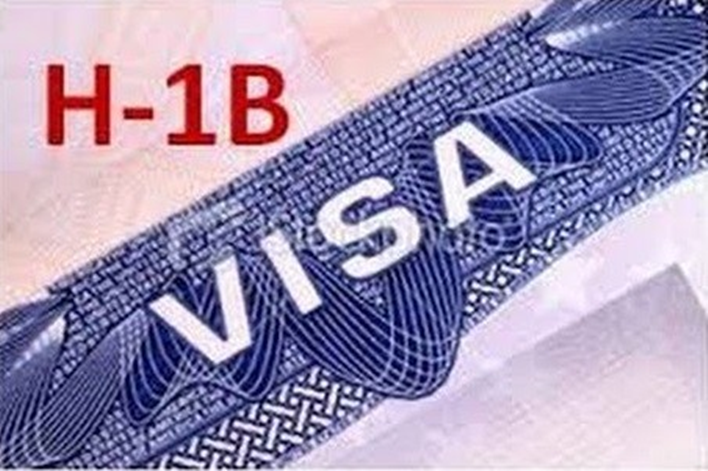Yes, H1B Visa status is undergoing changes at a faster pace. For many Indians, the United States still represents the dream life. However, moving and living in the US is not easy. One of the most common visas Indians apply for is the H1B visa.
This visa allows an individual to live and work in the US. They can also bring their families along with them and apply for a Green Card while on this visa.
Under the current system, luck plays a large role in getting a green card. This is because a lottery system determines who gets to stay in the US and who doesn’t. But, all of this may soon change.
H1B Visa
Most Indian students and professionals move to the US on an H1B visa. This is also known as a Dual Intent visa as an individual can apply for a Green Card while on this visa. This visa is typically issued for a period of three years after which it may be extended once for another three years. To qualify for this visa, an individual must have a minimum of 12 points where each year of college/ university education accounts for 3 points and each year of work experience is equivalent to 1 point.
Read: US Green Card Rules – Stricter CSPA Rule Policy Could Impact Thousands of Families
H1B Visa Status – Key Changes Under Trump’s 2nd term for H-1B
- Steep Fee Increase: A new $100,000 application fee for new H-1B visa petitions (effective Sept 21, 2025). Existing holders & renewals are not subject to the fee.
- Wage-Based / Tiered Selection System Proposed: Instead of a simple lottery, preference will be given to higher-paid workers. There is a 4-tier wage system proposed: entry, qualified, experienced, fully competent. Higher wages and certain job locations get more weight in the selection.
- Higher Minimum Salary Floors: The proposals include raising the minimum threshold salary for H-1B visas, possibly to $130,000 (up from current levels) in many cases.
- Stricter Documentation & Compliance: More supporting evidence required, tougher proof of job role, qualifications, etc. More scrutiny on third-party / subcontractor placements.
- Shift in Emphasis toward High-Skill / High-Wage Roles: Mid-level and entry roles will find it harder; there is less priority for lower-paid roles. The system is skewing towards roles with high demand and high compensation.
Read: Latest US H-1B Visa Updates 2025 – Key Changes For Indian Applicants
Impacts on the Indian Economy & Job Market
Increased Costs for Indian IT Firms
Indian companies that send employees to the US under H-1B may face 10-30% higher costs due to higher visa fees, wage requirements and compliance burdens.
Offshoring More Attractive
As working onsite in the US gets more expensive & uncertain, companies may prefer to keep work remote or shift operations back to India (or increase onshore/offshore mix). This could benefit India’s outsourcing / global capability centres (GCCs).
Margin Pressures / Shift of Business Models
Firms that rely heavily on H-1B for staffing may see pressure on margins; they might need to increase salaries, change staffing strategies, or reduce dependence on US-site work.
Impacts on Indian Professionals & Return Migration
Reduced Opportunities for Early-Career & Mid-Level Professionals
Freshers, those in lower pay scale jobs, or roles that don’t command high wages, may find it much harder to get H-1Bs. The wage-based system means competition increases for those who cannot demand very high salaries.
Increased Interest in Returning to India / Other Destinations
Many mid/senior-level Indian professionals are exploring returning to India. Recruitment agencies report spikes in inquiries & job applications from those concerned about US policy changes.
Brain Gain Potential
The policy shift could reduce “brain drain” and possibly reverse some migration flows. India could benefit if returning professionals bring skills, experience, and investments. May accelerate domestic innovation, startups, and R&D.
Key H-1B Visa Stats
| Category | Data / Estimate |
|---|---|
| Indians on H-1B (FY 2024) | 283,397 approvals |
| (71% of all H-1B approvals) | |
| Indian immigrants in U.S. (2023) | 2.9 million |
| Intent to Return | 45% |
| Deportation Concern | 16% |
| Confirmed Deportations (2025 YTD) | 1,080 deported (Jan–Sep 2025) |
| Proposed Repatriations | 18,000 undocumented targeted for repatriation |
| Sources: TOI | The Guardian |
Wider Macro Effects & Risks
Effect on Remittances
If fewer Indians move to the US or work onsite, remittance flows to India may slow (though remote work might offset some). Contribution to the US economy by Indian H-1Bs might drop.
Stock Market / Investor Sentiment
Indian tech stocks saw a decline after the $100,000 fee announcement. Investors perceive risk in business models that depend heavily on US hiring/visas.
Policy Signals to Other Countries
Countries like Germany, the UK, and others see this as an opportunity to attract Indian tech talent. Talent flows may diversify away from the US.
Also See
- H4 Visa Work Authorization Current Status and Rules
- US Decides to Allow Work Permits to Spouses of H-1B Visa Holders
- No Modification to H1b Visa Extension Policy
- What is Green Card Lottery program
- Trump’s Immigration Reform
- New H1B Visa Rules – Things You Should Know
- US Work Permit Visa Requirements – The A to Z
- US Visa Renewal in India – Everything You Should Know
- H1B Visa – Everything You Should Know
- India now 4th Largest Source of Illegal Immigrants in the USA
- New USCIS Policy Make it Easier To Deny H1B Visa Applications
- Fewer H1B Visa Applications by Indians Approved In 2017
- How to Apply for H1B Visa Extensions
- New Provisions Introduced for H1B Sponsors
- H1B Visa Petitions to be Submitted Electronically
- Trump’s Merit Based Immigration And Green Card System – Key Points
